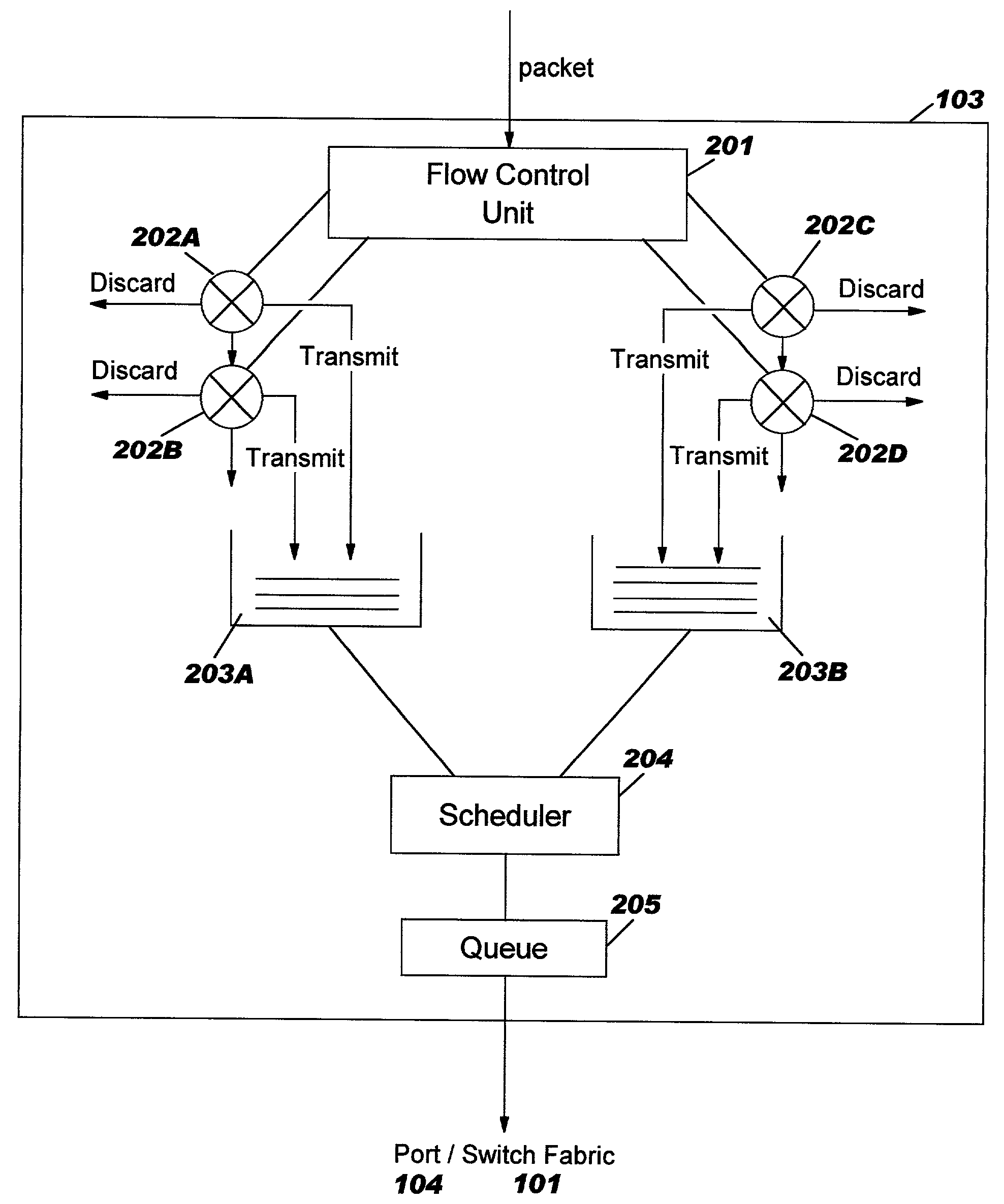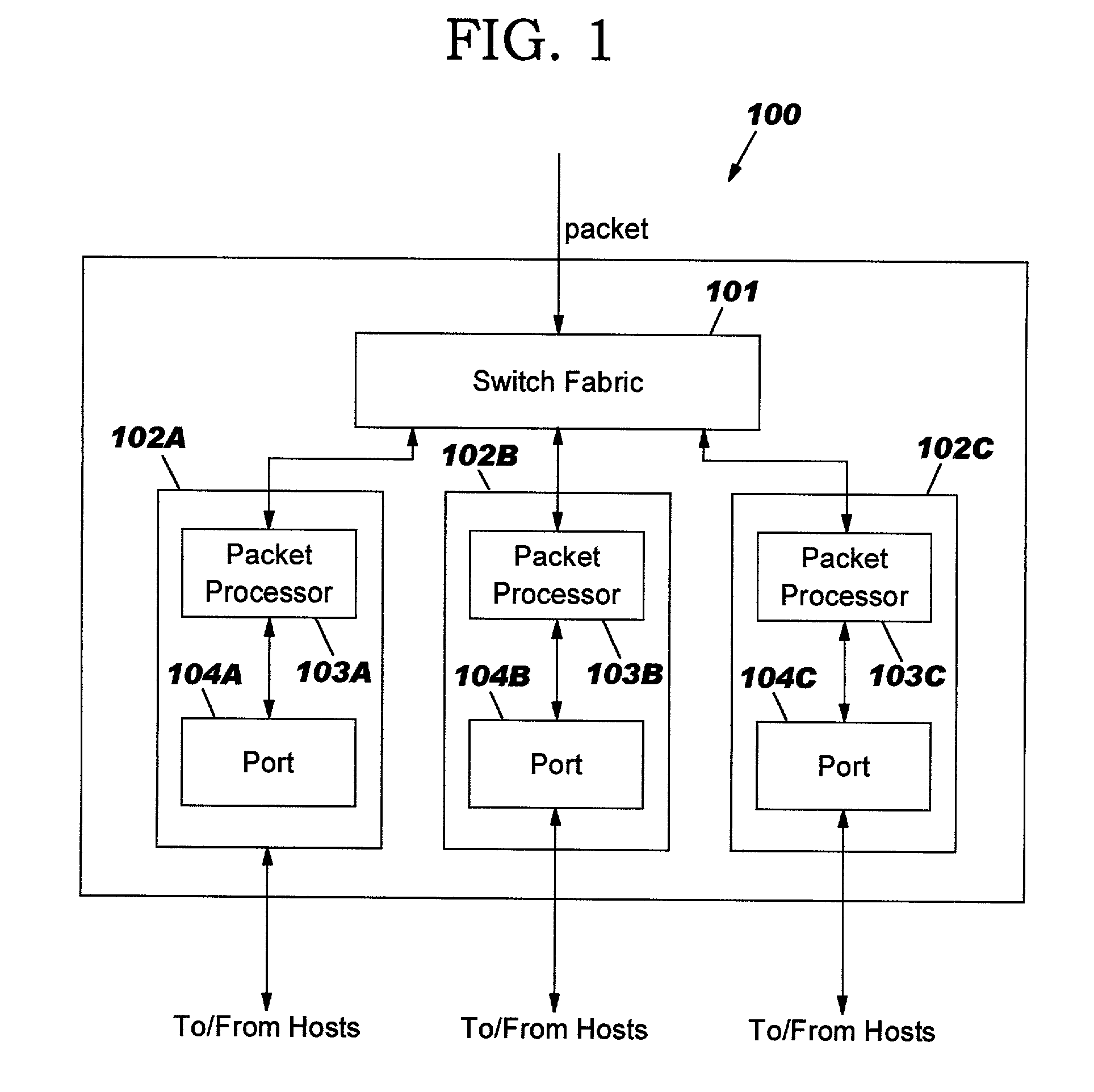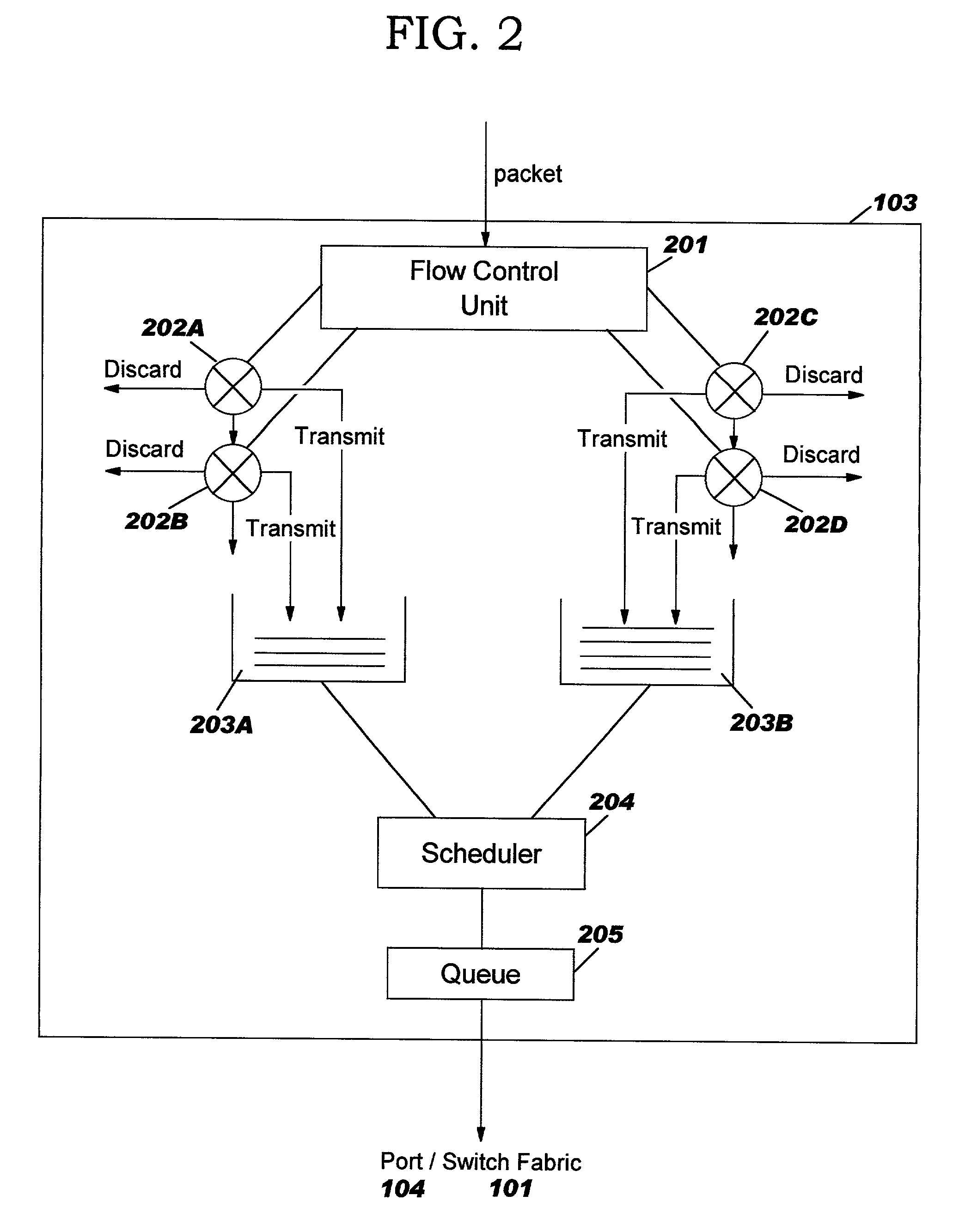Priority based bandwidth allocation within real-time and non-real-time traffic streams
a bandwidth allocation and priority technology, applied in data switching networks, digital transmission, electrical devices, etc., can solve problems such as complex implementation of scheduling, and achieve the effect of simple design and higher priority
- Summary
- Abstract
- Description
- Claims
- Application Information
AI Technical Summary
Benefits of technology
Problems solved by technology
Method used
Image
Examples
Embodiment Construction
FIG. 1—Switch in a Packet Switching Network
[0022]FIG. 1 illustrates an embodiment of a switch 100 in a packet switching network. Switch 100 may be configured to receive packets of data that may be directed to another particular switch 100 or host (not shown) in the packet switching network. Switch 100 may comprise a switch fabric 101 configured to direct the incoming packets of data to particular blades 102A-C coupled to switch fabric 101. Blade 102A may comprise a packet processor 103A coupled with ports 104A. Blades 102B and 102C are configured similarly to blade 102A. Blades 102A-C may collectively or individually be referred to as blades 102 or blade 102, respectively. Packet processors 103A-C may collectively or individually be referred to as packet processors 103 or packet processor 103, respectively. Ports 104 may collectively or individually be referred to as ports 104 or port 104, respectively. Each port 104 may be coupled with hosts (not shown) or other switches 100. Blade...
PUM
 Login to View More
Login to View More Abstract
Description
Claims
Application Information
 Login to View More
Login to View More - R&D
- Intellectual Property
- Life Sciences
- Materials
- Tech Scout
- Unparalleled Data Quality
- Higher Quality Content
- 60% Fewer Hallucinations
Browse by: Latest US Patents, China's latest patents, Technical Efficacy Thesaurus, Application Domain, Technology Topic, Popular Technical Reports.
© 2025 PatSnap. All rights reserved.Legal|Privacy policy|Modern Slavery Act Transparency Statement|Sitemap|About US| Contact US: help@patsnap.com



